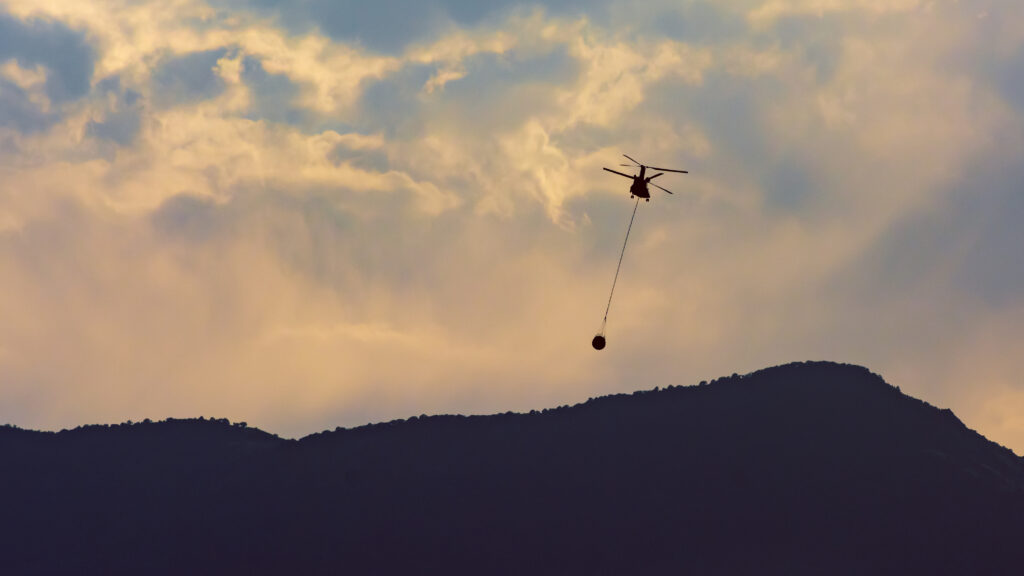A helicopter carries a water bucket to fight a wildfire near Richfield, Utah. (Photo by harpazo_hope via Getty Images)
Ahead of what’s expected to be a hot and dry summer in the Mountain West, Utah is expanding its aviation-based wildland firefighting capabilities.
The Utah Division of Forestry, Fire and State Lands on Wednesday announced the creation of the Diamond Fork Helitack crew, stationed at the Spanish Fork Airport. Meanwhile the National Weather Service is predicting above average temperatures for much of Utah this summer, with precipitation levels slightly below average.
And according to the National Interagency Fire Center, much of northern Utah could see above normal fire activity this July and August.
The state says it’s been working to expand its helicopter-based fire suppression for some time. The newly announced eight-person crew will “aggressively” attack fires around the state through a contract with Mountain West Helicopter — a state official on Thursday said Utah will pay a daily operating cost of $3,550 to have access to the helicopter and pilot. The state will pay an additional $1,600 per flight hour for the aircraft, while Mountain West Helicopter will pay for the fuel used and a pilot, mechanic and fuel truck driver.
That contract will run for five years and will give the state access to an aircraft for 120 days annually, though the division can extend that window if there is high fire activity.
GET THE MORNING HEADLINES DELIVERED TO YOUR INBOX
The new crew will be able to fight fires in Utah’s remote corners, improving response times during the important initial attack phase, the division said. The helicopter can also carry a bucket to perform water drops, bring equipment to other fire crews, transport firefighters and provide reconnaissance.
“Adding this helitack crew is the next logical step in expanding our aviation capabilities within the Division,” Mike Melton, Utah’s deputy state fire management officer for aviation, in a statement. “This is our third contracted helicopter. Adding this aircraft and crew augments our heavy lift aircraft capabilities by getting boots on the ground quickly into inaccessible areas as well as the wildland-urban interface.”
Overall, the Division of Forestry, Fire and State Lands expects an average fire season this summer, with moisture from the last two above-average winters resulting in a late start to fire season and more favorable conditions.
So far, most of 2024’s fires around Utah prescribed burns, according to the Great Basin Coordination Center. The largest wildfire of the year came in April, when the Leota Fire burned about 65 acres on Ouray National Wildlife Refuge. According to BasinNow.com, the fire was sparked by heavy machinery.
SUPPORT NEWS YOU TRUST.
The post In what could be a hot, dry summer, Utah prepares to fight fires from the air appeared first on Utah News Dispatch.

